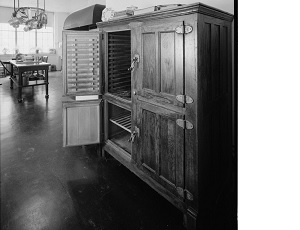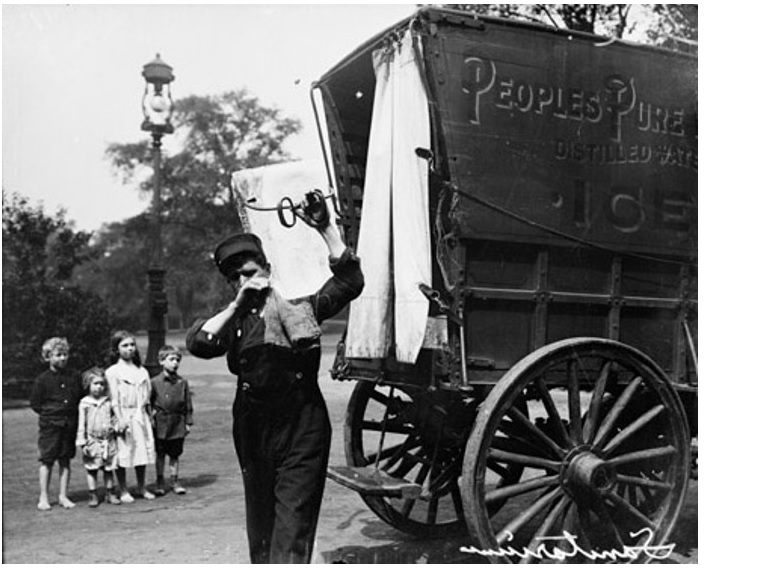Industrial ice harvesting arrived in Chicago in 1847 when Frisbie and Burroughs put up a 2,000 ton ice house on the North Branch of the Chicago River. The 1880 Census Special Reports: Ice Trade, available in the Government Documents Department gives a nice snapshot of the Chicago ice trade in the 1880s.
Chicago got its ice both locally and from Wisconsin. Annual consumption ranged from 575,000 to 900,000 tons depending on the weather and prices. The meatpackers used the most ice. Next were the breweries. These two industries consumed about 350,000 tons each year. 875 men were employed delivering ice.
According to The American Ice Harvests, artificial refrigeration began taking certain markets from natural ice harvesters in the 1880s. Breweries and storehouses began using mechanical refrigeration. Southern states and overseas destinations such as Calcutta began making their own artificial ice bringing to an end the ice trade by ship. Demand for natural ice continued to grow as machine-made ice was expensive and machines could produce only a few tons a day.
This changed rapidly after 1910 with the introduction of larger and more efficient machines. The Report of the Department of Health of the City of Chicago estimated 82 percent of Chicago’s ice was natural ice in 1911. By 1922, only 10 percent of the 2,500,000 tons used were natural ice. The rest was produced artificially.
Small home refrigerators were not widely available until the late 1920s though, so the familiar ice wagon continued to deliver ice for home iceboxes. The Health Department counted around 2,000 ice dealers, or more than 10 per square mile.
Although burly horses and men were needed to deliver ice, it was a low status job. The Health Department commented in 1905 that icemen used the troughs in front of saloons where horses drank and dogs bathed to wash the insulating sawdust off the ice. Furthermore, many of their wagons were the same grimy wagons used to deliver coal in the winter.
Sales of refrigerators continued to grow through the Great Depression. The 1940 Census of Housing reports that 600,959 households in Chicago had mechanical refrigeration in 1940. 259,967 used ice and 101,861 had no refrigeration. Production of refrigerators was stopped during World War II, but after the war everybody rushed out and bought a big refrigerator and an even bigger car. By 1950, 90.8 percent of Chicago households had mechanical refrigeration. About 5 percent, or 54,775 used ice and 43,225 had no refrigeration. By 1960, refrigerators were so universal that the Census did not count them. Refrigeration units for trucks and railcars also became universal during the 1940s and 1950s, closing another major market for the commercial ice trade.
Now commercial ice is pretty much a party supply item. According to the 1997 Economic Census the ice industry produced 2,265,000 tons of ice cubes and 345,000 tons of block ice for the entire U.S. in 1997. Chicago alone consumed that much in 1922. On the other hand, many home air conditioners are rated at 3 tons, equivalent to the cooling power given by 3 tons of ice melting in 24 hours. Modern Americans are not lacking in cooling power. In an ironic twist we now put bags of ice in the refrigerator, not to keep the refrigerator cool, but to keep the ice cold.




Add a comment to: Ice, Continued: Technology That Changed Chicago